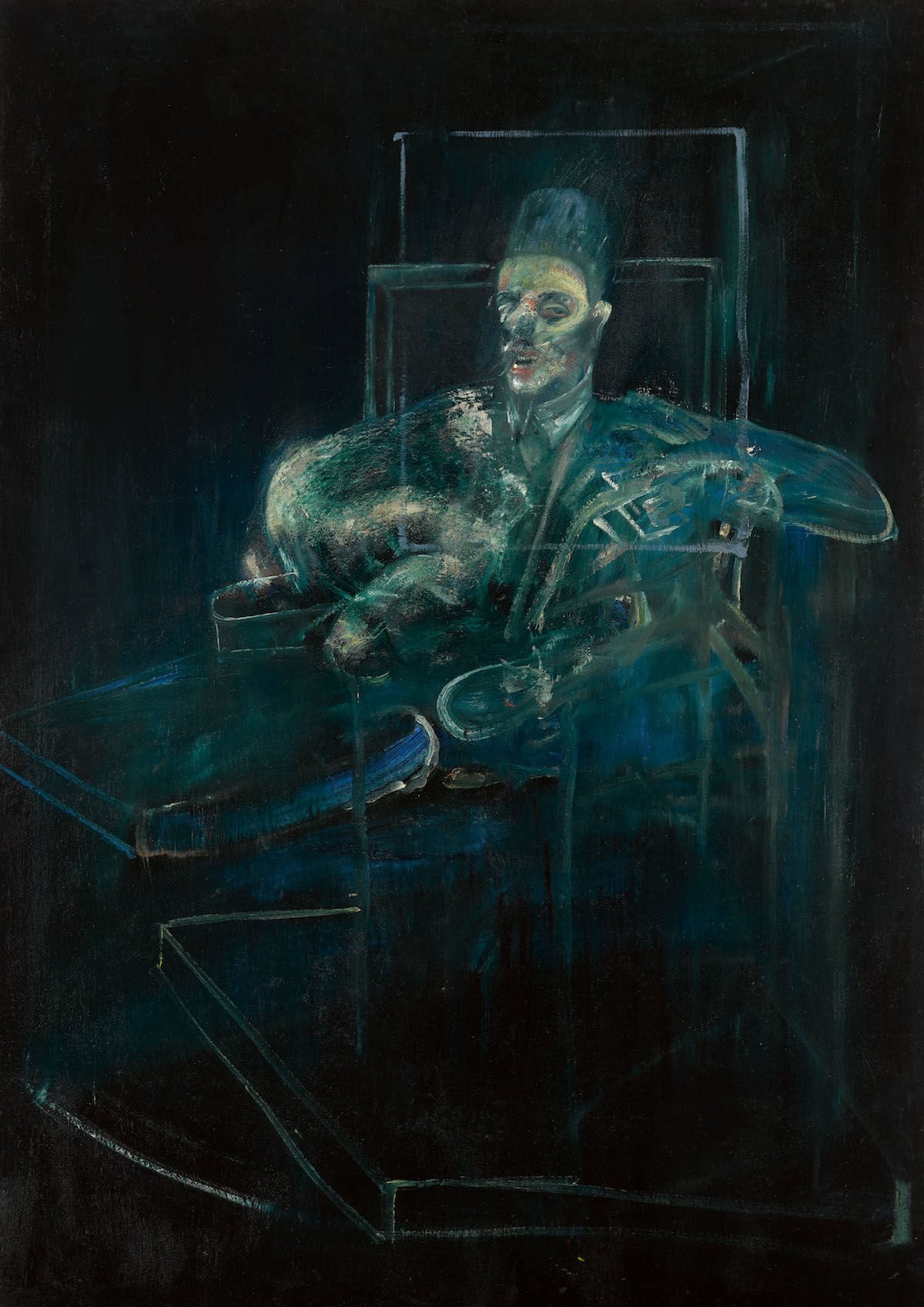
The Nahmad family is known for bringing some of the most expensive and significant modern artworks to international art fairs such as Art Basel. Inevitably, the Picassos, Rothkos, and Calders displayed on their booths act as bellwether for the high-end art market.
Some years, these paintings linger. Some years, they go fast. This year is a fast one.
The latest edition of Art Basel, which opened to VIPs on Tuesday, is an example of the booming market. By the end of the day, Helly Nahmad gallery sold its Francis Bacon Pope painting, according to a representative.
The 1958 canvas was offered for $15 million, and the sale price wasn’t disclosed. Multiple people considered the work, according to the gallery. It was the second-highest known price at the fair. Earlier in the day, Hauser & Wirth reported the $40 million sale of an 11-foot-tall Spider by Louise Bourgeois.
Francis Bacon’s Pope. Photo by Tim Schneider.
You may recall the ghostly Pope from Sotheby’s contemporary art evening auction in November 2019, just before the pandemic struck. At the time, it was consigned by the Brooklyn Museum to raise money for its collections fund. Estimated at $6 million to $8 million, it fetched $6.6 million, and was bought by the Helly Nahmad gallery.
The $15 million list price represents a considerable markup over just a few years—127 percent, to be exact.
There’s been a steady stream of high-end Bacon paintings at auction. Two years ago, billionaire Sotheby’s owner Patrick Drahi was the winner of Francis Bacon’s Triptych Inspired by the Oresteia of Aeschylus (1981), which fetched $84.6 million.
Earlier this year, star architect Norman Foster’s triptych fetched $51.2 million at Christie’s in London. Patrick De Pauw, a scion of a Belgian collecting family, sold Bacon’s Study for Red Pope 1962, 2nd Version 1971 (1971) for $46.3 million at Sotheby’s.
Bacon’s auction record of $142.4 million was established in 2013 for Three Studies of Lucian Freud (in 3 parts).
Additional reporting by Tim Schneider.